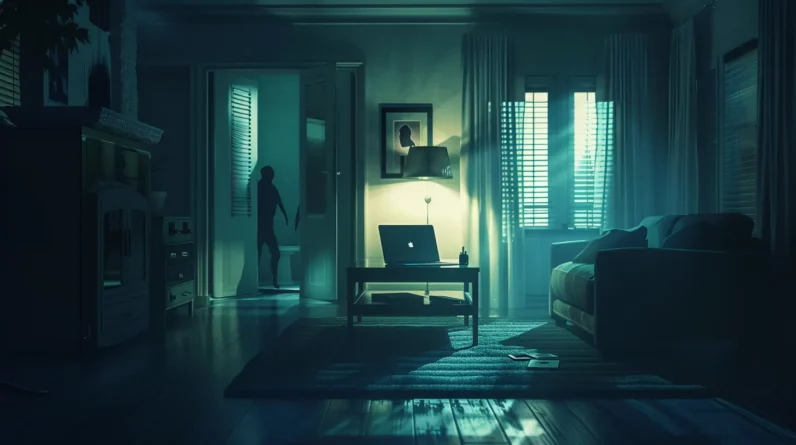
We’ve all been there – thinking our homes are secure, but simple oversights can leave our properties vulnerable to break-ins and potential danger. We’ve identified common smart home security mistakes that put our homes at risk. Leaving doors unsecured, hiding keys in obvious places, and neglecting smart home security tech are just a few mistakes that can have devastating consequences. We’ve also fallen prey to relying solely on self-monitoring, failing to secure second-floor windows, and more.
Recognizing these mistakes, we can take steps to avoid them and create a safer, more secure home – and that’s just the beginning of our journey to a more secure tomorrow.
Leaving Doors Unlocked and Unsecured
As we go about our daily routines, it’s easy to overlook the simplest yet most critical step in home security: locking our doors, a habit that can make all the difference in preventing break-ins and securing our homes. Leaving doors unfastened or unguarded is an open invitation to burglars, making us an easy target. Two-thirds of all burglaries occur during daylight hours, emphasizing the importance of always locking doors for security.
Developing a habit of securing all entry points, we can greatly reduce the risk of unauthorized access and potential burglaries. It’s vital to regularly check and secure doors, even when we’re at home, to prevent break-ins and enhance our home security.
Hiding Keys in Obvious Places
We often undermine our home security efforts by hiding spare keys in obvious places, creating an open door for burglars to take advantage of our carelessness. It’s a common mistake that can have serious consequences. Leaving a spare key outside, under doormats or in flower pots, is an open invitation to intruders. Instead, we should consider secure alternatives like lockboxes with access codes or smart locks that eliminate the need for traditional key hiding.
We can also give a spare key to a trusted neighbor or friend, ensuring that our home remains secure. By avoiding these obvious hiding spots, we can greatly reduce the risk of unauthorized entry and protect our homes from potential break-ins.
Neglecting Smart Home Security Tech
Failing to keep our smart home security devices in top shape can leave our homes vulnerable to potential threats. We often overlook the importance of regular maintenance for our devices, which can lead to system failures and compromised security. It’s essential to check power sources after power outages and inspect battery-powered devices to make sure they’re functioning properly. Keeping software up to date is also important to prevent cyber attacks and guarantee our security systems are effective.
Neglecting tech maintenance can have serious consequences, so it’s imperative we prioritize device maintenance to safeguard our smart home security. By staying on top of maintenance, we can trust that our devices are working together to protect our homes and loved ones.
Relying Solely on Self-Monitoring
While maintaining our smart home security devices in top shape is vital, relying solely on self-monitoring can be a critical mistake that compromises our home’s safety. By depending on self-monitoring, we risk delayed responses to security alerts, increasing the risk of missing critical events. To guarantee timely reactions, we should consider professional monitoring services that offer continuous surveillance. Here are three key benefits of professional monitoring:
1. Essential reactions: Professional monitoring services ensure that alarm triggers are responded to promptly, reducing the risk of overlooking critical events.
2. Improved security: With 24/7 monitoring, professional services help prevent the risk of overlooking important alerts that could compromise our home security.
3. Peace of mind: By opting for professional monitoring, we can prioritize our home’s safety and enjoy greater peace of mind.
Failing to Secure Second-Floor Windows
Many homeowners overlook the importance of securing second-floor windows, mistakenly believing that their height provides sufficient protection against potential intruders. However, we must remember that burglars can be creative and determined. They may attempt to access second-floor windows using ladders or by climbing trees, making it essential to take extra precautions. We should secure ladders and trim tree branches near second-floor windows to prevent unauthorized entry.
It’s vital to make sure all windows, regardless of floor level, are properly secured to enhance home security. By taking these steps, we can prevent burglaries and protect our homes. Don’t rely solely on the height of your second-floor windows; instead, take proactive measures to secure them and safeguard your property.
Providing Unnecessary Hiding Spots
By inadvertently creating hiding spots on our properties, we unintentionally invite burglars to lurk in the shadows, putting our homes and loved ones at risk. To guarantee this doesn’t happen, we need to make sure our homes are free from potential hiding spots. Here are three essential tips to help us do so:
1. Trim bushes and trees: Keeping our vegetation neat and tidy eliminates potential hiding places for intruders.
2. Clear out clutter: Removing clutter and debris from our yards and exterior spaces prevents criminals from finding hiding spots on our property.
3. Maintain well-maintained landscaping: A tidy exterior not only enhances our home’s curb appeal but also reduces the risk of providing cover for burglars attempting to break into our homes.
Broadcasting Vacations and Absences
We often unwittingly put our homes at risk by broadcasting our vacation plans and absences on social media, making it easy for potential burglars to know exactly when to strike. A staggering 65% of burglaries occur during daylight hours, making it important to avoid advertising our absences.
To maintain home security, we should refrain from sharing details of extended absences online. Instead, utilize smart lights with vacation modes to simulate occupancy and deter potential intruders. Moreover, prevent package theft by refraining from announcing vacations and arranging for package pickups. By being mindful of our online presence, we can greatly reduce the risk of break-ins and protect our homes from potential threats.
Ignoring Online Security Vulnerabilities
Since connecting our devices to the internet, we’ve opened ourselves up to a new wave of potential threats, leaving our smart home systems vulnerable to cyber attacks and Wi-Fi hacks. Ignoring online security vulnerabilities can have devastating consequences, including unauthorized access to our home security systems and personal data breaches. To avoid these risks, we must take proactive measures to secure our smart home technology. Here are a few essential steps to take:
1. Use strong passwords and change default router login credentials to prevent hackers from gaining access to our systems.
2. Enable two-factor authentication to add an extra layer of security to our devices and accounts.
3. Keep our routers and devices updated with the latest software and firmware to prevent vulnerabilities in our smart home systems.
Conclusion
As we wrap up our discussion on common smart home security mistakes, we’re reminded that even the most tech-savvy among us can overlook important details. Some may say, ‘But I’m not tech-phobic, I’ve got this!’ Yet, it’s precisely this overconfidence that can lead to complacency. Don’t fall into the trap. By recognizing these common mistakes, we can take proactive steps to fortify our homes and protect what matters most – our families, our belongings, and our peace of mind.







